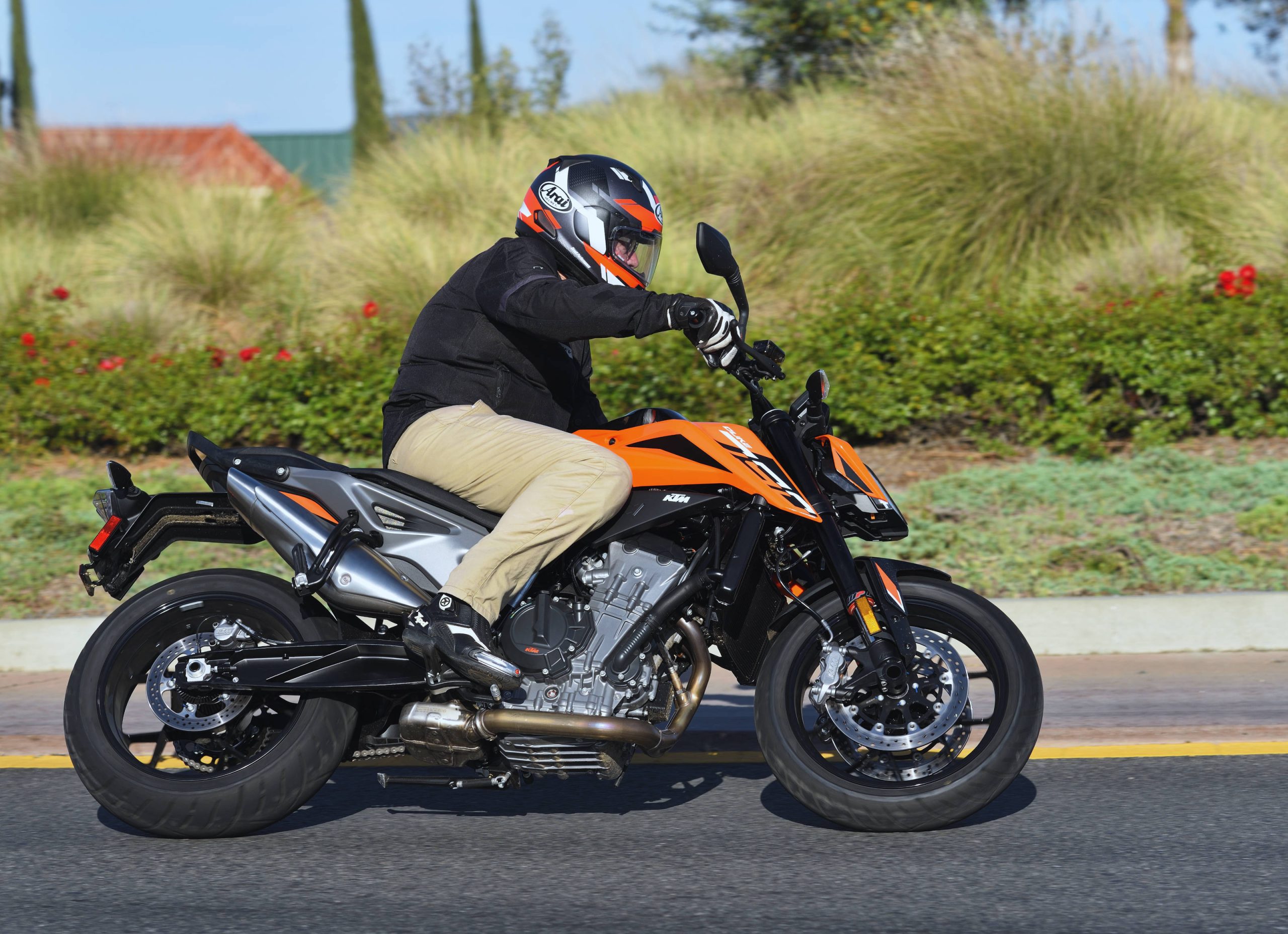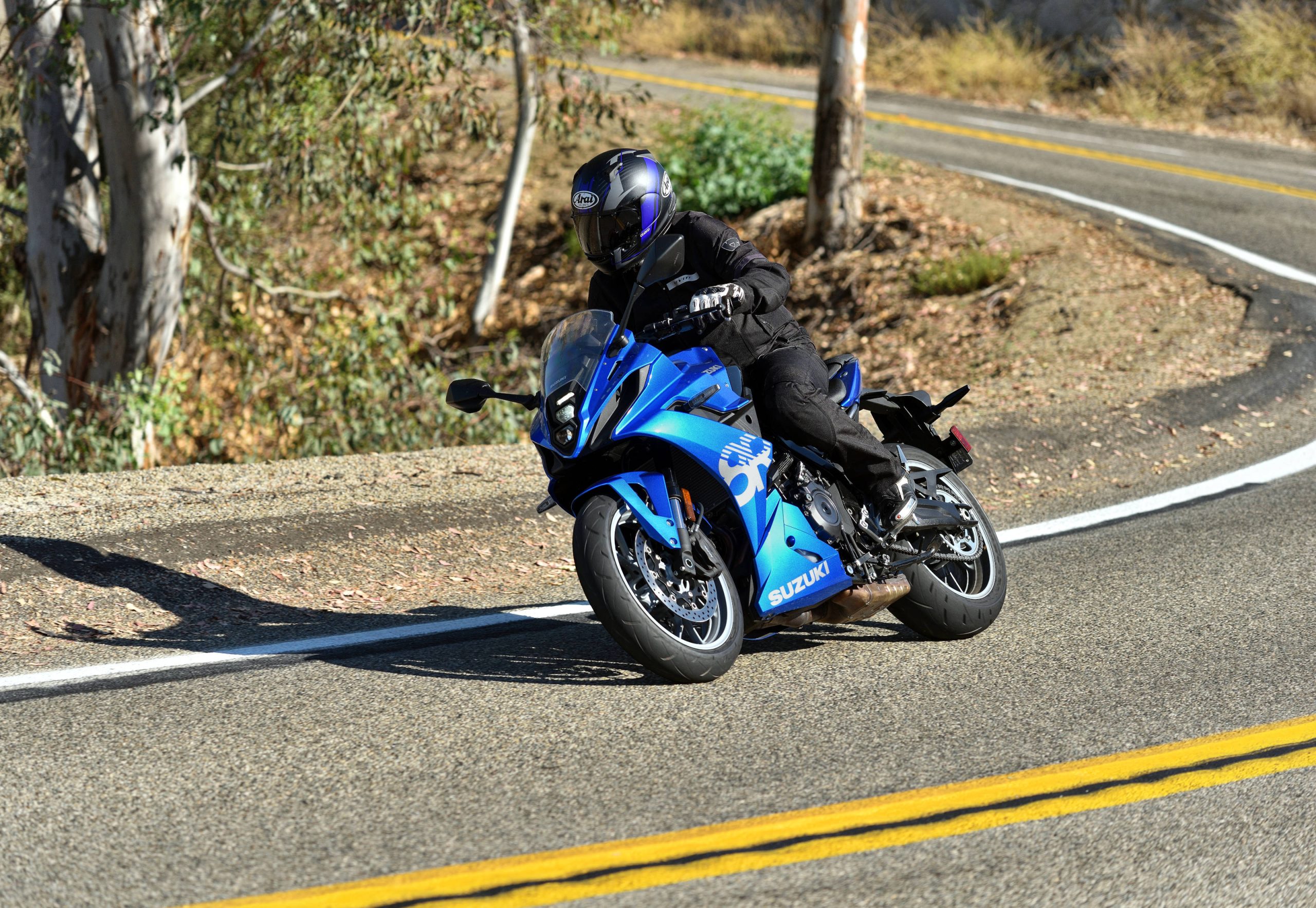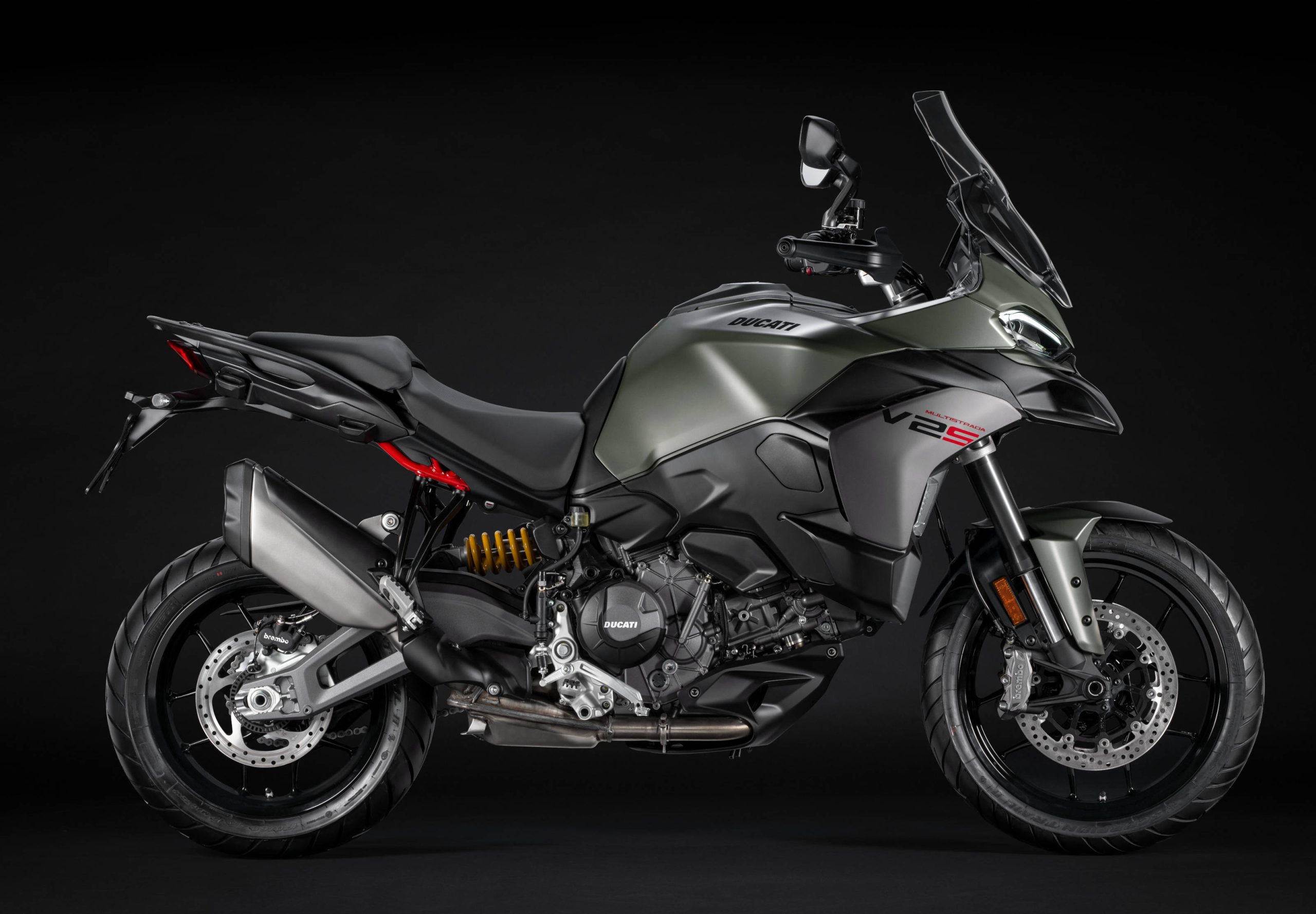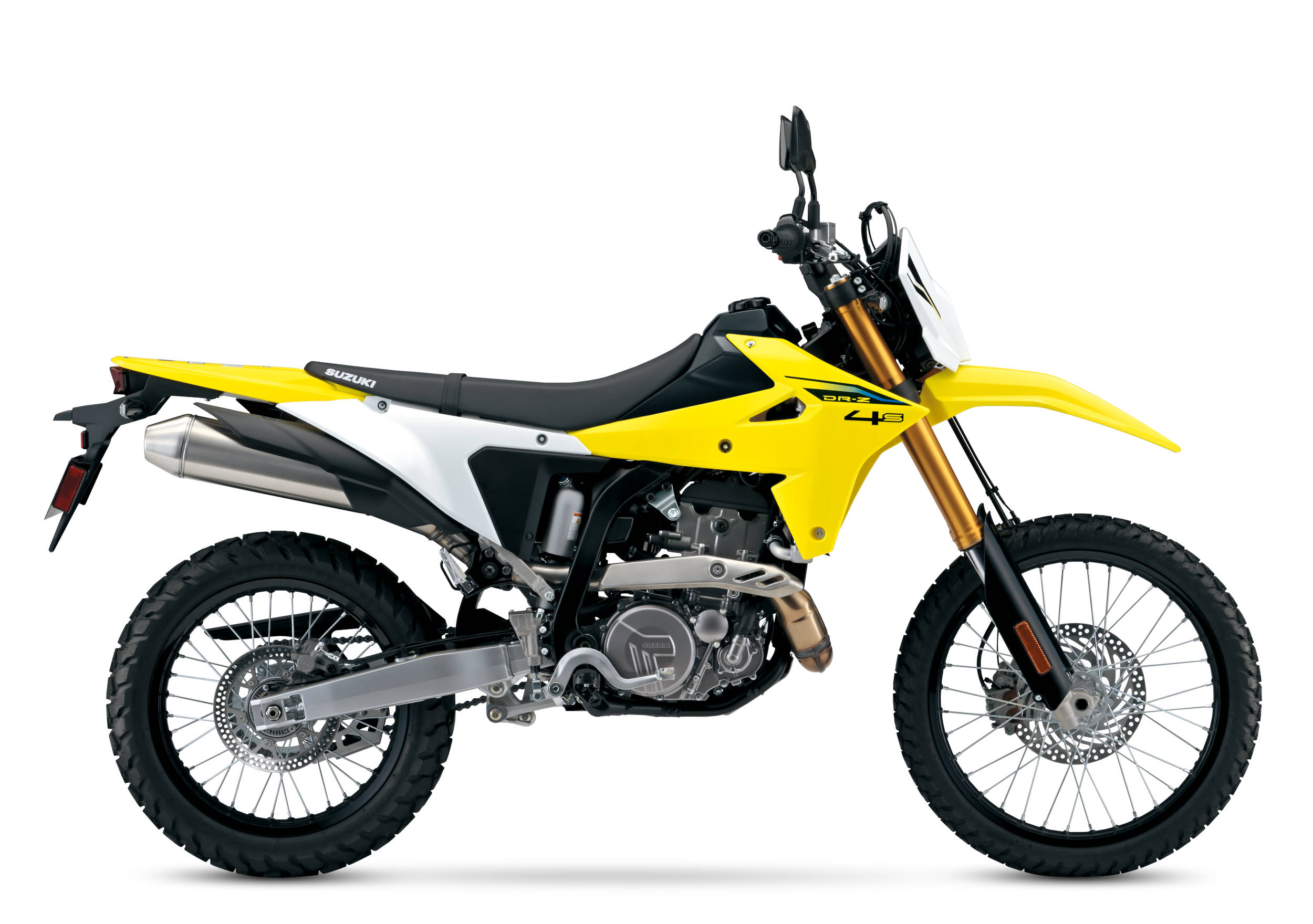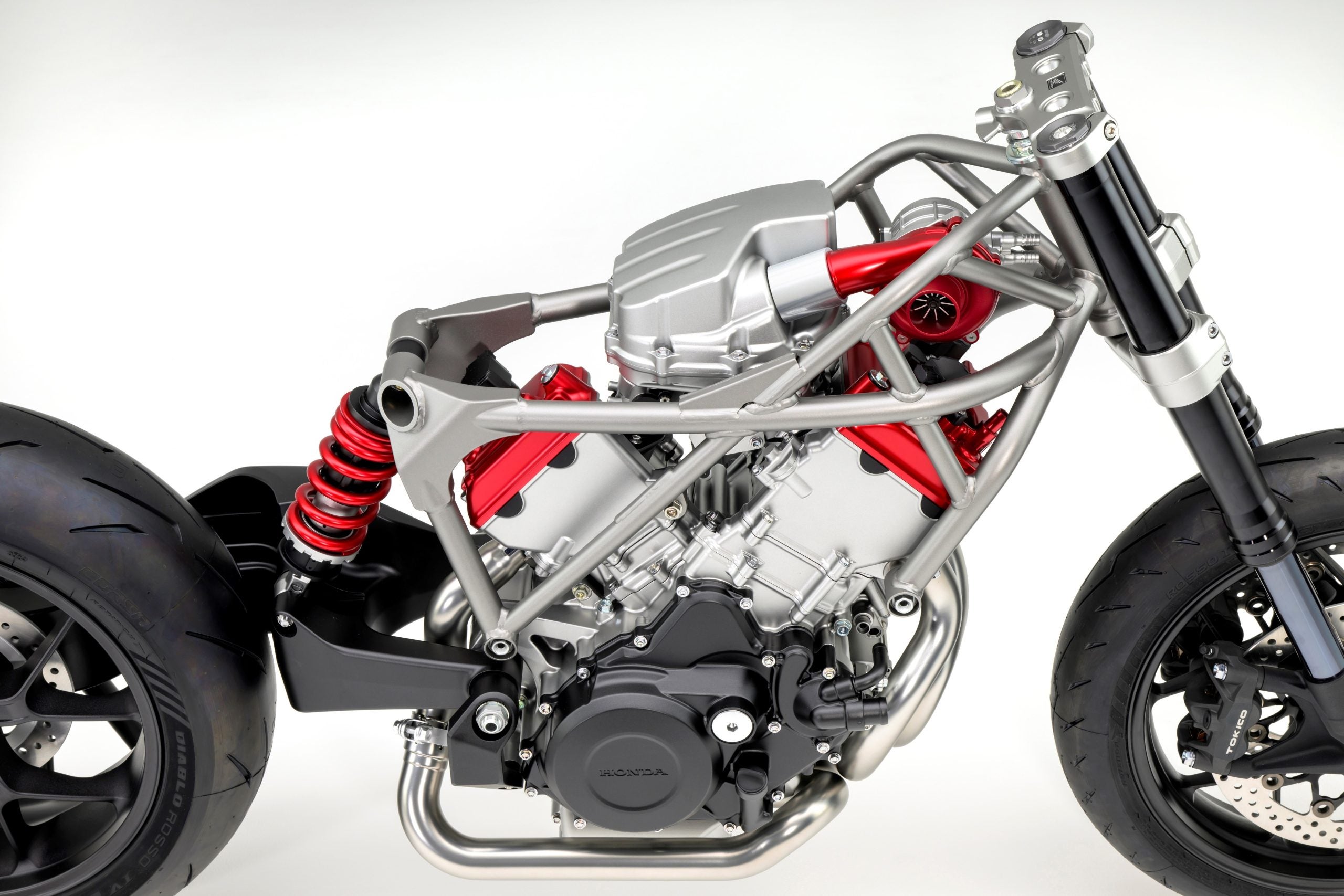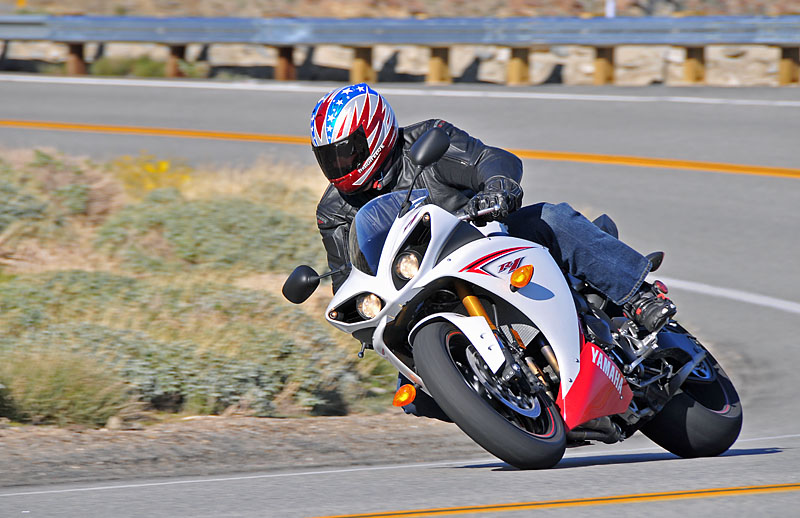
By now, you have probably read a dozen, or so, race track impressions of Yamaha’s new R1. You are also likely aware of Ben Spies incredible success on the bike in WSB. We took a more street-oriented, practical approach to our evaluation of the new R1.
Last September Yamaha announced that they were “shifting paradigms” with performance and technology on the 2009 YZF-R1. The major step in that direction was to trickle down some of the technology used in their highly successful MotoGp efforts. For the all new R1, Yamaha started at the very core of it’s venerable powerplant. The first thing they threw out was the “old” 180 degree crankshaft and replaced it with a 90 degree unit, otherwise known as a “crossplane crankshaft” ala the M1. What this means is, in a 180 degree crankshaft, each connecting rod is located one half of a crankshaft revolution from the next, on the 90 degree unit, each connecting rod is one quarter of a revolution from the next. The firing order has also been revised to accommodate the change and now fires in uneven intervals of 270-180-90-180 degrees. By staggering the firing time and using the crossplane crankshaft, there is less inertial torque and a more linear power curve. These changes were not intended to increase torque; they were made so the existing torque is more useable in the lower RPM range while still giving the same high RPM performance of a conventional inline four cylinder. A reverse rotating coupling-type balancer was also added to counter-act unwanted vibration and aide in power delivery.
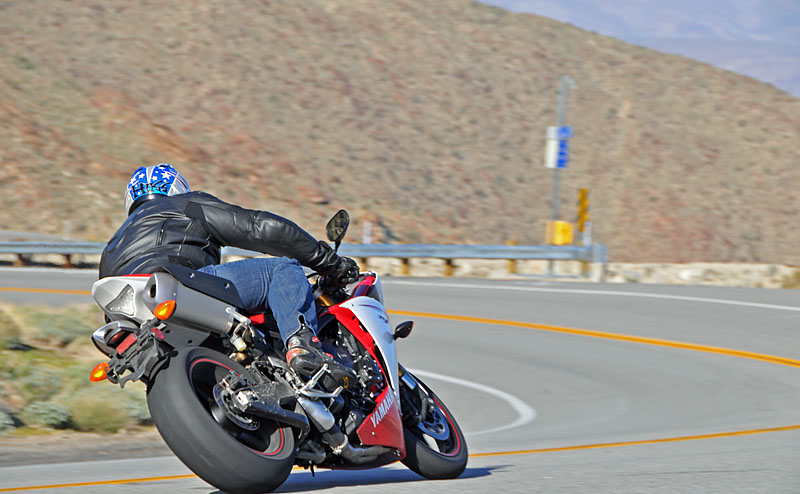
Yamaha has taken their YCC-T “fly by wire” throttle system a step further and added rider selectable modes. The modes dictate the response time in which the fly by wire system opens the throttle valves. In the standard mode, you get the optimum performance at all RPM’s. For a livelier throttle response at lower RPM’s, the “A” mode will get you 30% quicker throttle opening from 0 to 50 % throttle position than standard mode. In situations where you might need to subdue the power delivery, “B” mode offers a little less sharp throttle response by reducing opening time by 30% across the entire throttle position range. Changing modes can easily be done by using a switch mounted on the right clip-on to select the appropriate setting.
Another production first for the R1 is Yamaha’s SOQI front fork. The new fork further shifts from conventional thinking by isolating compression damping in the left fork assembly and rebound damping in the right. Since both fork assemblies always move in unison, this allows for finer tuning of each function as well as a reduction in weight.
We were recently given a chance to ride the all new R1. Babbit and I swapped the R1 back-and-forth with a 2009 Honda CBR1000RR as a reference point. It was an opportunity I was eagerly awaiting. With all of the talk about the new engine I wanted to experience for myself what changing the crankshaft and firing order really did. The first thing I noticed after starting the R1 was the menacing growl being emitted from the mufflers. This definitely doesn’t sound like any R1 I’ve ever heard before. As I pulled out of the garage, I could feel the new engine eagerly wanting to accelerate from way down in the revs. This is definitely a new sensation, previous models needed to be revved a bit to begin to produce usable power. The ’09 may offer a bit too much grunt in the “standard” or “A” mode for more technical riding situations, but you’ve got “B” mode to handle those conditions.
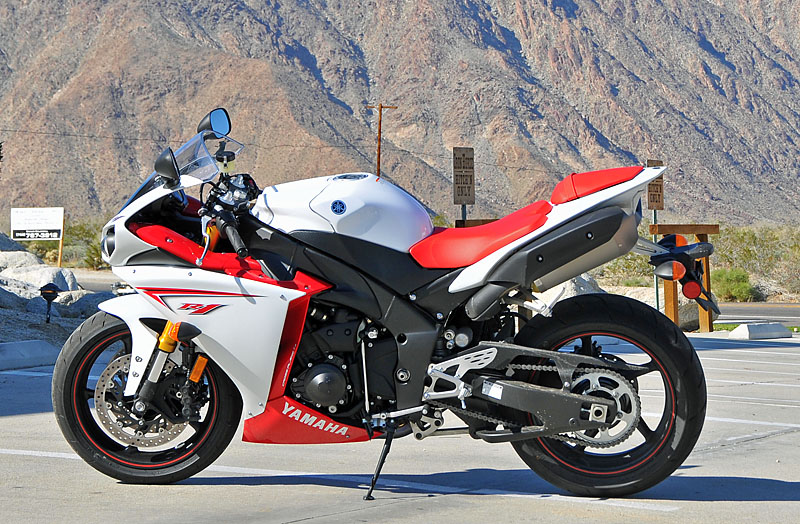
Having the CBR1000RR along was interesting. This is a great bike that has won several shootouts. Nevertheless, we both felt the R1’s engine was superior on the street. Undoubtedly due to the crossplane crankshaft, both of us commented on the lack of vibration from the R1, particularly at high rpm levels. Although the CBR is known for its low-end power, the R1 felt like a match for the CBR here, and perhaps even better through the mid-range. Although the R1 can judder a bit like a v-twin under 6,000 rpm, it becomes buttery smooth above that — all the way through redline.
A very light throttle return spring (compared to the CBR), coupled with a very light flywheel effect allows the R1 to rev instantly and, at the same time, exhibit little engine braking. The stock fuel injection seemed spot on across the tach.

Although the brakes are excellent on the R1, and the bike is reasonably comfortable (aside from some exhaust heat) and handles quite well, it is the engine that left a lasting impression. The new R1 does not feel like an inline-four. It doesn’t exactly feel like a twin, either, but it feels good . . . very good, and controllable. Babbit had this to say about the R1 powerplant: “Glass-smooth engine at all rpm, almost a surreal experience. Redline feels the same as 6k rpm, in regard to vibration. There is no instinctual feeling for mechanical sympathy with this engine, since it neither sounds nor feels as if it is straining or being abused — even when revved to high rpm. It simply loves to rev, and rips through its entire rpm range like a great white in a feeding frenzy. Instantly makes all other engines seem very ordinary.”
The new R1 offers a new type of engine sensation from a Japanese inline-four. A sensation that was both sensually pleasing and a functional improvement on the street.
MD Readers Respond:
- I disagree with a few observations by another reader;The firing order provided by Yamaha is a little poorly worded but easy enough to understand. 270 degrees of crank rotation between the first 2 pistons firing (270, or -90, plus 180), another 270 between the next 2 (180 plus 90), then 90 degrees (90 to 180) then another 90 (180 to 270, back where we started). An uneven firing order, for sure.
Engine braking is a result of manifold vacuum created by closing the butterflies on the throttle bodies. This is why diesel engines do not exhibit engine braking… the throttle bodies do not have butterflies; the accelerator on a diesel engine controls the amount of fuel injected into the cylinder, not the air charge. While a lighter flywheel effect will actually increase the engine braking created by closing the throttle with the clutch engaged (the kinetic energy the manifold vacuum is opposing, the sum of the engines reciprocating mass plus the mass of the motorcycle and rider in motion, will be slightly less in an engine with less flywheel effect), the resulting ability of the engine to spin up faster will decrease the amount of engine braking available when downshifting and dropping the clutch, like when entering a turn. That one’s a matter of perspective.
As for the cross plane crank having anything to do with the power horsepower and torque curve of the engine, I have to side with Thomas on this one. I see a midrange heavy engine that is 10 to 15 HP down on the class leaders (in engine output anyway). That tuning is derived from the cam timing, port shape, valve size, compression ration, bore and stroke, etc., and could just as easily be achieved with a 180 degree crank… remember the original GSXR1000? The alleged advantage of the cross plane crank (besides the wicked cool exhaust note) is the increased grip provided by offering the rear tire brief intervals to re-establish grip with the road surface between power pulses, much like that offered by the discrete and punctuated power pulses of a twin. Joe
- Those high pipes & mufflers have got to go! They raise the Cg. Extend the “Polar moment of inertia” and prevent any luggage capacity or passenger comfort. Why bother with passenger pegs when the back seat is directly over mufflers heated by catalyzed exhaust fumes? They exit the catalyst at 900 degrees F. Hot buns aren’t fun!High pipes began back in the 90’s with Ducati’s groundbreaking 916. Those days are over. Drop the weight, drop the Cg. Drop those long pipes and huge mufflers Yamaha. This bike is about performance, not fashion. Frank
- I’d just like to add my comments to Your R1 review..as an 09 Owner and
MSF/ Sportbike/ Total control instructor..whew…. this bike is one of
the most satisfying bikes I’ve ever ridden! a True joy on the street
and a no holds bared track pedigree. Yes it can get hot..but thats a set
of slip-ons away from being solved- One thing you didn’t cover in your
review— this Liter bike Rocks for 2 up riding…! the better bottom
end power and almost non existent engine braking make it a thrill
machine for 2 up enjoyment….its just missing those handles built into
the tank like the Ducati GP bike.Is it the most powerful? no…. Is it the lightest? no…but you’d be
pressed to tell.. feels similar to my ole’ 95 cbr900rr on turn
in….best handling? ..well its excellent…Suspension is firmer than
previous R1s…. excellent brakes too… its all of those things and
more ..if you’ve ever watched Rossi’s Camera on his bike during a MOTO
GP race you remember the sound….. the sound is incredible…almost
mini V8 with headers roaring away…. now you can hear it for yourself,
it really makes you feel like a bad ass …..ALL of these things combine
to make this a bike a blast to ride. Chris - Your information on the 2009 R1 engine is correct, 270-180-90-180, Uneven being the key word. Wilson
- Feeling humble for not knowing better than to try and use my keyboard
before getting my morning quota of caffeine, I thought I would try to
sort out the business of firing order vs. firing intervals in regards
to the YZF-R1.In a conventional in line four-cylinder engine, the two pistons in the
middle move as one, and ditto for the two at the ends. The crankpins
for cylinders 1 and 4 are angularly co-located, and the other two
crankpins, in the middle, are similarly together and 180 degrees
opposite of crankpins 1 and 4. Cylinders 2 and 3 must fire either 360
degrees apart or else in unison, and ditto for cylinders 1 and 4.
Assuming that no two cylinders fire in unison, it is apparent that the
firings must be uniformly spaced at 180 degrees, and it is also
apparent that two firing orders are possible: 1-3-4-2 and 1-2-4-3.On Yamaha’s web site, they refer in at least one place to the sequence
270-180-90-180 as a “firing order”. This is not a good way to
describe this sequence of numbers, because this sequence says nothing
about the order in which the individual cylinders fire. My confusion
was partly due to having seen this on their site, this morning.
Elsewhere on the same page of their site they describe this as the
“firing interval”, which is a far better way to describe this
sequence. With a conventional in-line four, this sequence of numbers
would be simply 180-180-180-180.According to other sources of information, to include a video clip
that could only have come from Yamaha, the firing order that Yamaha
uses for the crossplane engine is 1-3-2-4. This is a valid firing
order for a crankshaft where each crankpin is separated from its
adjacent crankpins by 90 degrees, but only if the shortened and
extended firing intervals are swapped. To satisfy both this firing
order and the firing interval 270-180-90-180, it is necessary that the
two crankpins at the ends of the crank lie in one plane, 180 degrees
apart from each other, and that the two crankpins in the middle lie in
another plane, 180 degrees apart from each other, with these two
planes intersecting at 90 degrees. I am certain that this is correct,
and it is distinct from the supposed arrangement where, moving from
one end of the crank to the other, the crankpins are successively
staged at 90 degree intervals.It is interesting to note that the net effect, so far as concerns the
firing intervals, is apparently to cause an in-line four to emulate a
90-degree V4, which has the same irregular spacing in the firing
intervals. It is further interesting to note how Yamaha and Honda,
two companies that so often seem to be of one mind, have diverged in
their thinking. Honda’s new V4, that is supposed to be officially
revealed in the coming months, is reportedly like no other V4 that has
come before, in that the two middle cylinders will form one side of
the V, and the two outer cylinders will form the other side. Or so it
has been claimed, and it seems highly unlikely that even MCN would
make up something like this. Thomas - I’ve got a comparo for you. Something old, something new. Say the 03
ZX9, which you loved and most didn’t, or a 919,and some current liter
hyperbike. I mean on the track too, as well as the real world. I don’t
ride these things but I have this odd idea that all the impressive
incremental improvements in this class add up to almost nothing in any
practical sense. Bob - I love your site, and it is the first place I go each day.You bike evaluations are always well written and enjoyable to read. One thing that would be very interesting to get your comment on, is the general comfort level of the bike at street pace. Specifically, the seat, the bar height, how your neck feels, wrists etc., in relation to your your height and weight.
That real world opinion not usually found in the moto mags is really what sets you apart. Thanks for the consideration – Matt
- This article was interesting to read, not so much because of the information, but for a very different reason.For starters: “A very light throttle return spring (compared to the CBR), coupled with a very light flywheel effect allows the R1 to rev instantly and, at the same time, exhibit little engine braking. The stock fuel injection seemed spot on across the tach.”
Engine braking is due to internal engine friction. A lighter flywheel will have some effect, but it will be the opposite of what is claimed here. But for the most part, variations in engine braking, when not due to differences in engine friction, are due to fuel management, particularly when fuel injection is involved, and particularly when the throttle is controlled by the ECU. In this case, upon detecting that the user is rapidly closing the twist grip, the ECU may abruptly reduce fuel and air to the level needed for the engine to idle, which will be felt as pronounced engine braking. If the R1 was observed to exhibit less engine braking, it was likely due to greater hysteresis built into the fuel cutoff algorithm, and I would anticipate that this would be linked to the different rider-selectable throttle response modes.
“What this means is, in a 180 degree crankshaft, each connecting rod is located one half of a crankshaft revolution from the next, on the 90 degree unit, each connecting rod is one quarter of a revolution from the next. ”
Can you say, “crank throw”?
“The firing order has also been revised to accommodate the change and now fires in uneven intervals of 270-180-90-180 degrees.”
This says that cylinders 2 and 4 fire in unison, which requires that the crank throws for those two cylinders share the same position, which clearly is not compatible with the crossplane crankshaft. Since it is stated plainly and nicely that the engine gets smooth at higher rpm, it is to be assumed that the firings occur at uniform intervals, i.e., every 180 degrees. My mental image of a crossplane crankshaft is where two crank throws that are spaced 180 degrees apart from each other are not adjacent, i.e., 1 and 3 are 180 degrees apart, and 2 and 4 are 180 degrees apart. If this is correct, then the firing of 1 and 3 would be 360 degrees apart, and the firing of 2 and 4 would be 360 degrees apart. Thus, the correct firing order would be something like 0,180,360,540, etc. The firing order you gave makes no sense whatsoever. It suggests that all four cylinders fire within the first 360 degrees of crank rotation, with no cylinders firing during the remaining 360 degrees required for all cylinders to complete one cycle.
Now, it goes without saying that you just copied this from Yamaha’s marketing buzz. Even if that weren’t found on their web site, you shouldn’t have just copied that junk. That’s for selling bikes, not for giving meaningful information.
“less inertial torque and a more linear power curve”
Inertial torque must surely be a reference to angular momentum, but I can’t imagine why the angular momentum of the crankshaft would be altered by the crossplane configuration. What would happen, however, is that instead of all four pistons coming to full stop in unison and transferring their kinetic energy to the crankshaft / transmission / bike mass all at once, this exchange of kinetic energy would occur twice as frequently and with half the impulse each time that it occurs. But I can’t imagine that it would make any sense at all to call this “inertial torque”. And no way, no how would it effect the overall shape of the power curve.
“These changes were not intended to increase torque; they were made so the existing torque is more useable in the lower RPM range while still giving the same high RPM performance of a conventional inline four cylinder.”
YUCH! You guys sound like some of the people I used to hang out with, who were always talking this way, never concerned with the fact that they had no clue what they were talking about. You’re gonna write an article for an on-line magazine, and still just pull this stuff out of your you-know-what? By “increase torque”, do you mean the torque at some some specific engine speed, or the average torque, or the peak torque, or what exactly? Do you even know what torque is? To the extent that it is characteristic of a conventional inline four cylinder engine to exhibit strong high-performance, it doesn’t have anything to do with the in-line configuration per se. At any specific engine speed, torque is fully determined by how much fuel and air are captured per individual intake stroke at that engine speed, and power is fully determined by that and by the engine speed itself. This is all nothing but jabberwocky. Or as that old judge on “Boston Legal” would say, “Jibber-jabber!”
“A reverse rotating coupling-type balancer was also added to counter-act unwanted vibration and aide in power delivery”
What the heck is a coupling-type balancer, and how can a counter-balancer possibly aid in power delivery?
I still enjoyed the article, especially the pictures. Thomas

